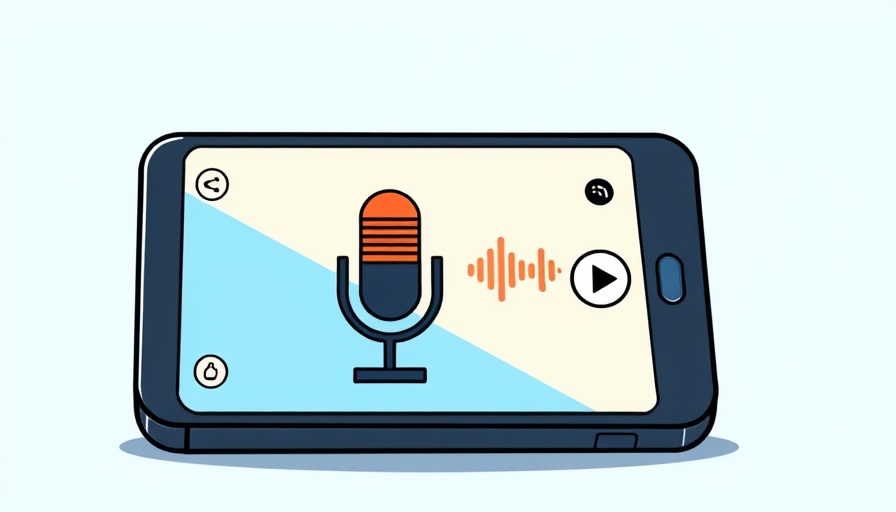
Revolutionizing Meeting Productivity: The Power of ChatGPT's Record Mode
In today's fast-paced business environment, time is of the essence, and meeting efficiency has become a critical focus. OpenAI is pushing the boundaries of productivity with its latest ChatGPT feature: Record mode. This innovative function allows users to record meetings and voice notes, converting them effortlessly into concise text summaries. Whether you're a team leader or an employee participating in discussions, this tool could fundamentally change the way we approach note-taking and information sharing.
How to Make the Most of Record Mode
Using Record mode is straightforward, making it accessible even for those who may not be tech-savvy. To get started, make sure that ChatGPT has permission to access your device’s microphone. Once you’re set up, simply hit the “Record” button and begin speaking. ChatGPT will transcribe everything as you go, allowing for natural conversation without the need for typing. Upon concluding your recording—set with a maximum length of two hours—you can create a refined summary or request additional transformations, such as personalized emails or formatted documentation.
The Legal Landscape: What You Need to Know
Before pressing that record button, it’s essential to be aware of the legal implications surrounding audio recording. Different regions have different consent laws; for instance, in New York, one-party recording is sufficient, while California requires consent from all parties involved. Understanding these laws not only ensures compliance but also promotes trust among colleagues and clients.
Benefits Beyond Summarization
Beyond straightforward meeting summaries, Record mode opens possibilities for diverse applications. Professionals can take advantage of its capacity to draft computer code or personalized messages, thereby streamlining workflows for software developers and administrative professionals alike. This feature highlights the flexibility of AI in handling complex tasks and enhances the overall collaborative experience.
Considerations for Data Privacy
Data privacy is a crucial concern as AI tools become more integrated into our work lives. OpenAI has stated that all audio recordings are deleted immediately after transcription, ensuring user confidentiality. Furthermore, audio files are not used for training the model, thus alleviating fears concerning data misuse. Users should remain vigilant, however, and always advocate for transparent policies on data handling by the platforms they use.
Looking Forward: Where AI Meets Human Interaction
The advent of features like ChatGPT's Record mode signifies a broader trend: the integration of AI into daily operations. As companies increasingly adopt these technologies, the landscape of business communication is changing dramatically. Future developments may include the ability to interact in multiple languages and improved accuracy in transcription, expanding accessibility to a global workforce.
Final Thoughts: Embracing the Future of Work
Integrating ChatGPT’s new Record mode into your workflow could revolutionize team efficiency and communication practices. By enabling clear and concise documentation of meetings, it allows professionals to focus more on decision-making and less on the mechanics of note-taking. As we continue to navigate the ever-evolving digital landscape, tools that enhance productivity and collaboration will become indispensable for those wishing to stay ahead in their fields. So, explore what AI can do for you and your team. Test out Record mode and see the positive impact it can have on your workflow!
 Add Row
Add Row  Add
Add 




Write A Comment